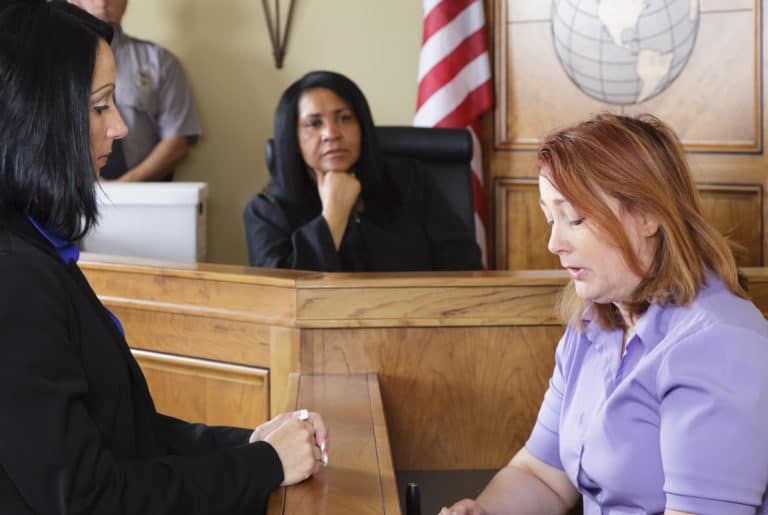Dealing With the Consequences of a Loved One’s Traumatic Death or Catastrophic Injury May Require Turning to the Civil Justice System
The following is adapted from Unthinkable.
The financial and emotional consequences of a loved one’s traumatic death or catastrophic injury, particularly when someone else is to blame, are huge. So many expenses, so much turmoil, so much anguish—and all because somebody else made a decision that caused them great harm.
You may imagine, in instances like this, that the criminal justice system is there to provide accountability and recourse to the victim (or the ones they leave behind). However, that’s not necessarily the case.
The criminal justice system exists to serve society’s interests, not specifically your family’s. It fills an essential role, but it doesn’t come close to addressing the totality of the consequences you may be facing. It’s not designed to.
The civil justice system, on the other hand, is. That being said, it’s not an avenue that every family chooses to pursue, or can. It has its own strengths and weaknesses. That’s why, before you turn to the civil justice system, it’s important to understand how it works, its potential limitations, and what a civil case can achieve.
Who’s At Fault?
The fact that your loved one has been killed or injured does not necessarily mean you can access the civil justice system. Its purpose is to provide compensation when someone else has done something wrong.
If your loved one was the only one in a car, fell asleep at the wheel, and ran off the road, the result may be a terrible accident—but that doesn’t mean that there is a civil case. There is only a civil case if someone else was responsible for causing the harm.
Fault matters, and it can get complicated. The classic example is a person who’s killed in an intersection because someone else ran a red light. That’s fault. But what if the person who had the green light was speeding? How do you balance the two?
The answer varies by state. But in the vast majority of states, you can bring a civil claim if the other people’s fault is greater than your own. Some states have a rule called “pure comparative negligence.” That means even if you are 99 percent responsible for what happened to you, you can recover 1 percent of your damages from the other person, even though they were only 1 percent at fault.
Damages You Can Claim in a Civil Lawsuit
The fundamental purpose of the civil justice system is compensation for the losses you’ve endured that were caused by the negligence of others. Generally speaking, there are three major categories of damages you can claim in a civil lawsuit: economic losses, non-economic losses, and punitive damages.
Damages for economic losses refer to compensation for actual financial losses: past and future medical expenses, past and future lost wages, the medical equipment or ongoing care your loved one needs, any modifications or accommodations to a home or automobile, and any other out-of-pocket expenses.
Damages for non-economic losses are a way to put a monetary value on the totality of the harm that has been caused. That includes pain, suffering, grief, loss of guidance and support, loss of companionship, loss of enjoyment of life, emotional distress or inconvenience, and physical impairment and disfigurement, among others.
The third form of damages—punitive damages, often referred to as “exemplary damages”—are intended to go beyond compensation. They are intended to punish the individual at fault and discourage others from acting in the same way. Punitive damages are only available to punish intentional, willful, wanton, or reckless conduct. You can’t recover punitive damages for conduct that is only negligent.
Time is of the Essence
When it comes to filing a civil claim, time is of the essence. It’s not that you need to do it in the immediate aftermath of your loss; my point is that the deadline for bringing a case can vary with circumstances. If you miss it, there’s no second chance.
Each state has what’s called a “statute of limitations” for bringing negligence cases involving injury or death. If you don’t meet the deadline outlined in the law, you forever lose your claim. For the most part, there is no wiggle room.
Why? Because legislatures decided that after a certain amount of time has passed, a person or company responsible for injuring or killing someone else should be allowed to stop looking over their shoulder and move forward with a sense of finality. Evidence gets old, witnesses move on, and it’s not fair for the responsible party to be haunted by the prospect of a lawsuit for decades.
Generally speaking, the timetable for bringing an injury case is longer than for cases involving death. That’s because when someone’s injured, it can take time to determine the extent of their injuries, the anticipated length of their recovery, and all of the likely costs. But in cases of death, the statute of limitations begins running as soon as the incident causing the death occurred.
Consequences for Families
One implication to all this is that you may need to make decisions about pursuing a civil claim at a time when you’re still feeling very raw and in turmoil over the loss you’ve endured. But you can be comforted by knowing that just taking the time to determine the deadlines in your circumstances does not commit you to actually taking any action.
You can do a Google search for the statute of limitations in your state. But, you need to be careful because there may be nuances in your circumstances that make all the difference—especially if the government is involved.
Your most reliable source of information is a skilled lawyer who specializes in personal injury and death cases and knows how to closely examine the laws in the state where the injury or death happened. Not a general practice lawyer; a specialist.
They have to know the nuances because the stakes are high. If a lawyer takes on a case and doesn’t file it within the relevant statute of limitation, then their case is lost, and they’ve committed malpractice. Most lawyers who specialize in this area deal with the nuances every day.
Practical Limits to Accountability
The person or company responsible for killing your loved one or causing them harm may be legally accountable for what they did, and the law may require them to compensate you. But there’s a practical reality that may limit your ability to recover for your losses: if they’re broke, you may get only as much as the automobile or property liability insurance that they carry provides.
When we’re talking about catastrophic injury or death, in most cases the insurance available is shockingly inadequate. When a client brings a case to our office, the first thing we look to uncover after we identify those we believe may be at fault is the total combined amount of liability insurance those responsible for the loss were carrying at the time of the incident.
The next thing we look at is the assets of the person or the company that caused the loss. Will that be enough to cover the gap between the insurance policy limits and the compensation that’s due? Maybe the driver only had $25,000 in coverage—but if they were on the job and driving for Amazon, that’s a different story because Amazon is going to be responsible for their conduct.
Generally speaking, people and companies with more assets buy more insurance. But at the end of the day, if those at fault have minimal insurance and no assets, you’re very unlikely to ever recover the full amount you’re due for the harm they caused. That is why it’s important to work with a lawyer to try to figure out insurance limits and assets as early as possible.
The Bottom Line
Seeking accountability outside the criminal justice system represents a meaningful opportunity for families to recover financially for their losses and their suffering. However, those who pursue it need to be aware of the practical limitations that may impact how much they can recover.
That said, pursuing a civil claim can be an empowering choice. Why? Because, unlike the criminal justice system, the civil justice system puts the injured person (or their family, in the case of a death) in control of the process.
For more advice on pursuing action through the civil justice system, you can find Unthinkable on Amazon.
A founding partner of the law firm Bachus Schanker, Kyle Bachus limits his practice to representing individuals and families in catastrophic injury and wrongful death cases nationwide. For more information, visit KyleBachus.com.





